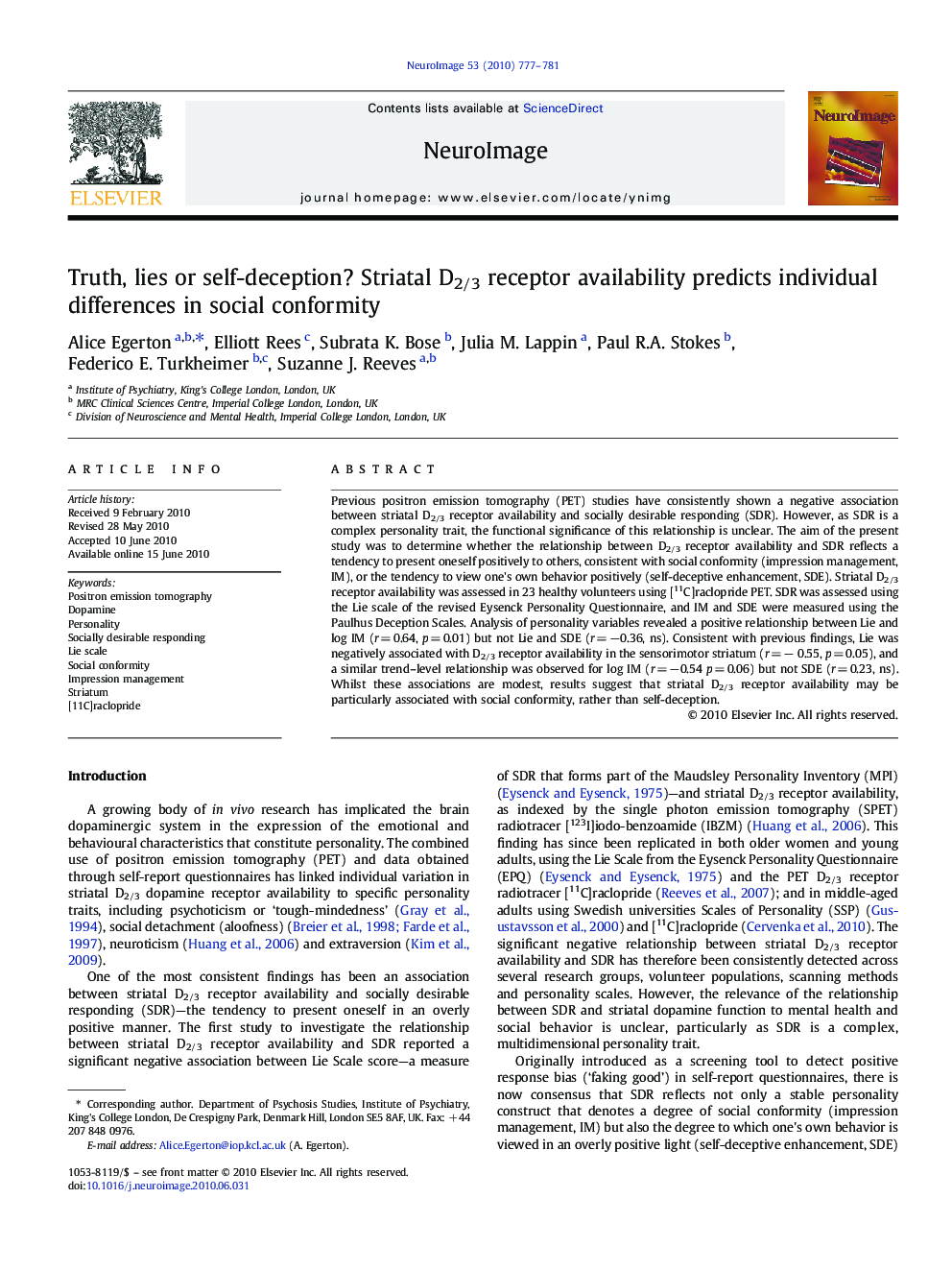| Article ID | Journal | Published Year | Pages | File Type |
|---|---|---|---|---|
| 3072294 | NeuroImage | 2010 | 5 Pages |
Previous positron emission tomography (PET) studies have consistently shown a negative association between striatal D2/3 receptor availability and socially desirable responding (SDR). However, as SDR is a complex personality trait, the functional significance of this relationship is unclear. The aim of the present study was to determine whether the relationship between D2/3 receptor availability and SDR reflects a tendency to present oneself positively to others, consistent with social conformity (impression management, IM), or the tendency to view one's own behavior positively (self-deceptive enhancement, SDE). Striatal D2/3 receptor availability was assessed in 23 healthy volunteers using [11C]raclopride PET. SDR was assessed using the Lie scale of the revised Eysenck Personality Questionnaire, and IM and SDE were measured using the Paulhus Deception Scales. Analysis of personality variables revealed a positive relationship between Lie and log IM (r = 0.64, p = 0.01) but not Lie and SDE (r = −0.36, ns). Consistent with previous findings, Lie was negatively associated with D2/3 receptor availability in the sensorimotor striatum (r = − 0.55, p = 0.05), and a similar trend–level relationship was observed for log IM (r = −0.54 p = 0.06) but not SDE (r = 0.23, ns). Whilst these associations are modest, results suggest that striatal D2/3 receptor availability may be particularly associated with social conformity, rather than self-deception.
